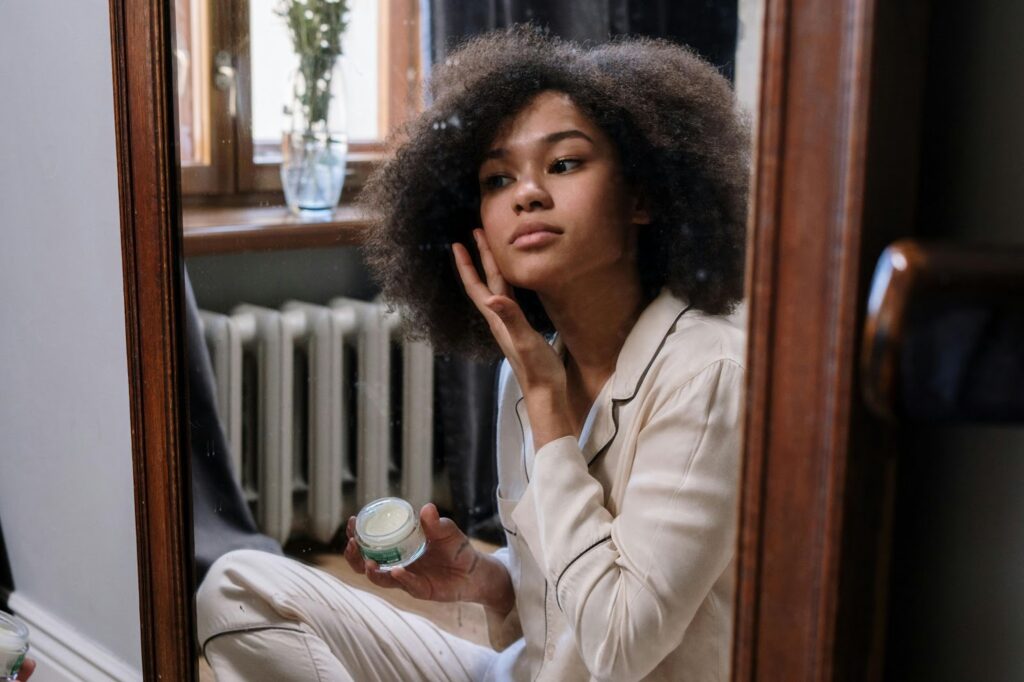
Like many, I started doing my skincare when I was in high school, during the pandemic. Skincare started trending on social media, and a big reason why I started was because of the pandemic. The hard part of the pandemic was that time would blend together. Having a routine to do every morning and evening helped me keep myself grounded in a time that was incredibly uncertain.
My esthetician was the one who showed me my first skincare products. As a fifteen year old, my skin was sensitive and temperamental, and her recommendations helped me work with my skin rather than against it. Skincare routines aren’t just for vanity, but are a part of healthcare. Not only does it help improve self esteem and mental health, it can help with skin cell regeneration and UV protection.
Skincare may seem like an “influencer” thing, but it can be accessible to everyone. A good skincare routine doesn’t have to be complicated or expensive. The best routines are built with an understanding of your skin type and lifestyle. Find skincare with ingredients that work for you and your routine.
Step 1: Identify Your Skin Type
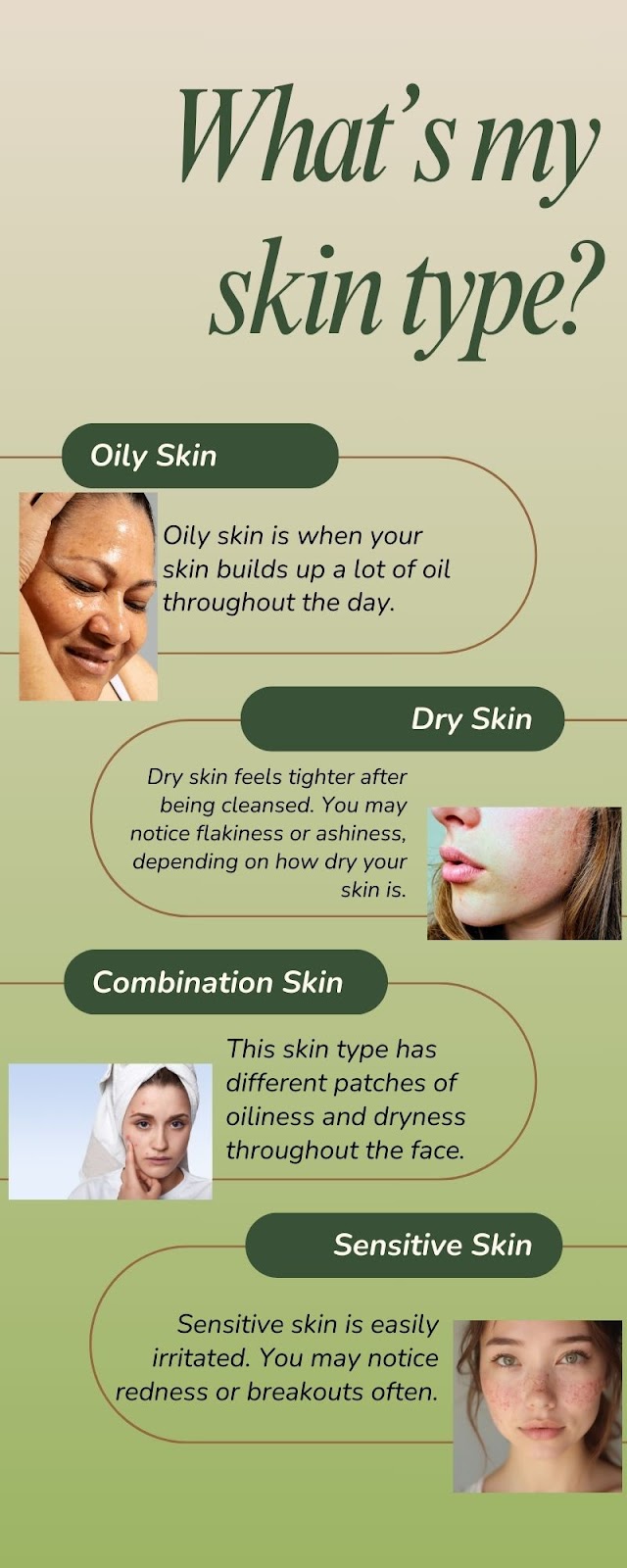
A good way to test for your skin type is to cleanse your face and see how your face reacts after 30 minutes of no product. You can also buy a blotting sheet to help determine your skin type.
- Oily Skin – Oily skin is when your skin builds up a lot of oil throughout the day. If you have this skin type, you may notice enlarged pores, blackheads and whiteheads on your nose and chin, and shininess in your T-zone (nose and forehead). Your blotting sheet would come out wet after 30 minutes. I used to have very oily skin, and I was prone to breakouts before starting doing my skincare more consistently.
- Ingredients like salicylic acid and niacinamide can help balance out the oiliness of your skin.
- Be careful not to dry out your skin too much. While it can be tempting to use alcohol based drying ingredients, these products can damage your skin barrier.
- Dry Skin – Dry skin feels tighter after being cleansed. You may notice flakiness or ashiness, depending on how dry your skin is. You may notice water being absorbed by your face as you cleanse it. This skin type is prone to sensitive skin, so be careful when selecting your products.
- Use products like hyaluronic acid and glycerin on dry skin to add moisture back in.
- Aloe vera and shea butter can also be good additions to your skincare routine.
- Combination Skin – Combination skin, in my opinion, is the hardest one to take care of. This skin type has different patches of oiliness and dryness throughout the face. The most common one is having an oily t-zone with dry cheeks and chin. However, people can have combination skin in different areas of the face.
- Products with lactic acid can help exfoliate oily patches in your skin without further drying out the dry patches.
- Hyaluronic acid is great for cleansing your face without aggravating the oiliness or dryness further.
- Sensitive Skin – Sensitive skin is easily irritated. You may notice redness or breakouts as you try new products. You can have sensitive skin with each skin type, so remember to find products that work for you.
- Think of this as an addition to your skin type. Look for ingredients that fit your skin type first and then see if it is sensitive skin friendly.
- Use gentle ingredients on your skin. Look for ingredients with lower concentrations of active ingredients.
- Normal Skin – If you have this skin type, I am jealous. This is the end goal of many skin care users. This skin type means your skin is balanced, neither too oily nor too dry. If you have this skin type, your skin might be smooth, without many visible pores, and doesn’t have too much sensitivity. Still, you should use skincare to protect your skin from the elements of the world.
- AHAs can help lightly exfoliate your face to cleanse it without being overwhelming.
- Vitamin C can help brighten your skin and promotes collagen production to keep your skin looking glowy and healthy.
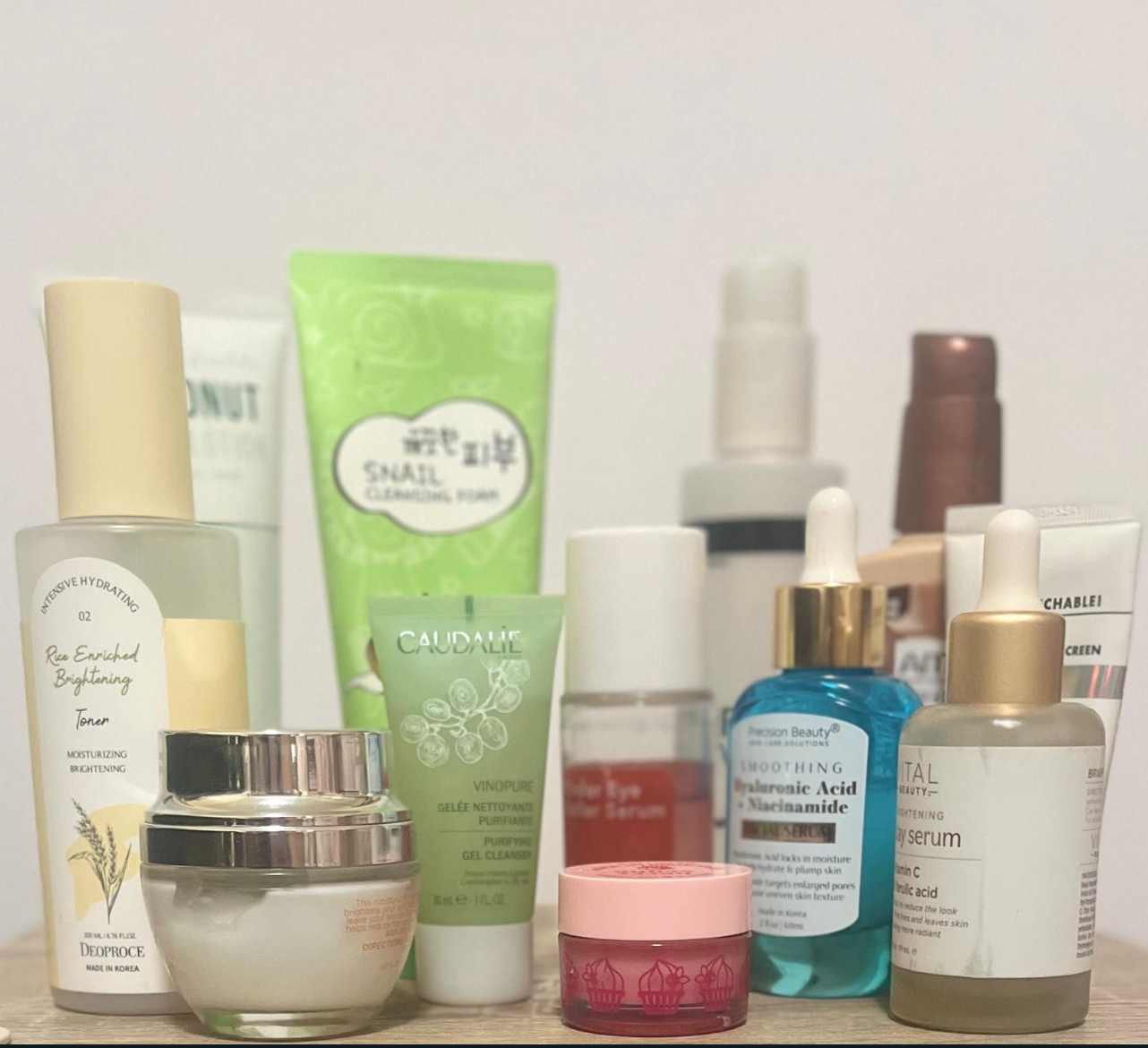
Step 2: The Essential Skincare Routine (Step-by-Step Guide)
1. Cleansing – The First Step to Fresh Skin
- Your face has different skin than the rest of the body, and using a facial cleanser can target the things your face has endured throughout the day. This can help clean off any pollution, dust, or makeup that is left on your face after a long day.
- Cleansing can dry out your face, so unless you have oily skin, consider cleansing once a day. There are many different cleansers out there. I’ve been using the Ésfolio Snail Cleansing Foam, and it’s been amazing. My skin’s not too sensitive, and this cleanser has been good at maintaining oil levels without drying out my skin. However, if this is your first time using skincare, I highly recommend CeraVe’s Gentle Foaming cleanser for a light refreshing cleanse at the end of the day.
- Many people choose to double cleanse. I recommend you start with an oil based cleanser or makeup remover to break up any leftover product on your face. Then, use a water based cleanser to get off any remaining residue.
2. Toning – Restoring pH Balance
- Think of a toner as a foundation for the rest of your skincare routine. Now that your face is fully cleansed, a toner can help bring hydration back into your face. It is especially important to find a toner that suits your skin type. Since toners act as a base to your skincare, I would make sure your toner addresses your biggest skin concern. I’ve been using the Deoproce Intensive Hydrating Rice Enriched Brightening Toner to help with my hyperpigmentation. A toner with hyaluronic acid could be good for dry skin while BHA toners are good for dry skin.
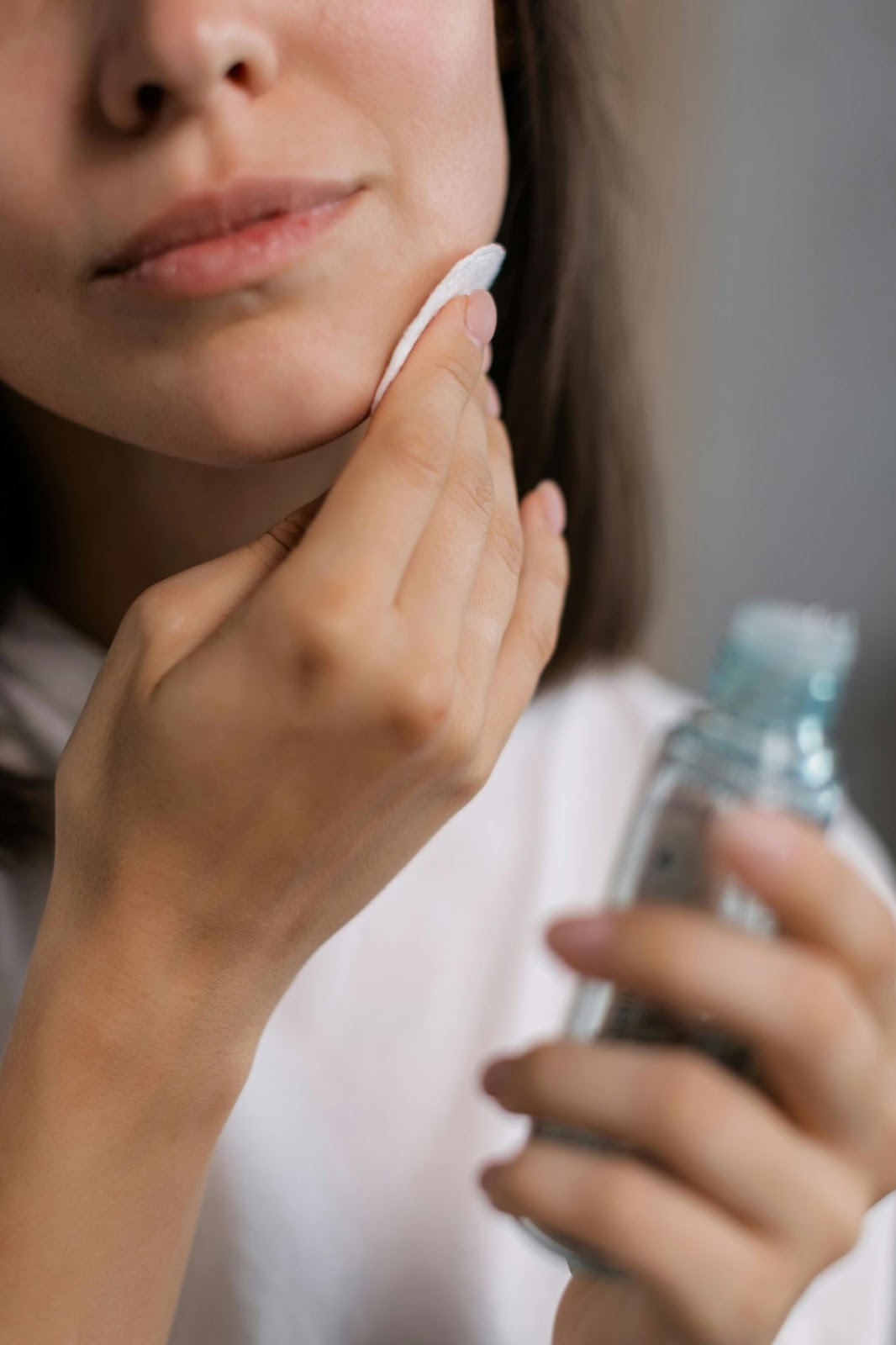
3. Serum – Targeting Skin Concerns
- If toner is the foundation, serum would be the wiring of the house. Serums are targeted ingredients to your skin. They are usually highly concentrated in one ingredient, making them incredibly powerful in giving targeted care. I currently have Niacinamide and Vitamin C serums in my skincare routine. Retinol is known for its anti-aging traits, and hyaluronic acid can be good for making the skin more plump and moisturized.
4. Moisturizing – Locking in Hydration
Moisturizer is like the roof. It locks everything in, protecting all of the skincare you’ve done so far. Moisturizer provides hydration for your skin, fighting dryness. Remember that even oily skin needs moisturizer. Without moisturizer, oily skin usually overcompensates with more oil. I’ve used a lot of moisturizers, but my favorite has been Nutrogena’s Hydroboost. It feels incredibly lightweight on my skin. Make sure you find a moisturizer with ingredients that suit your skin type.
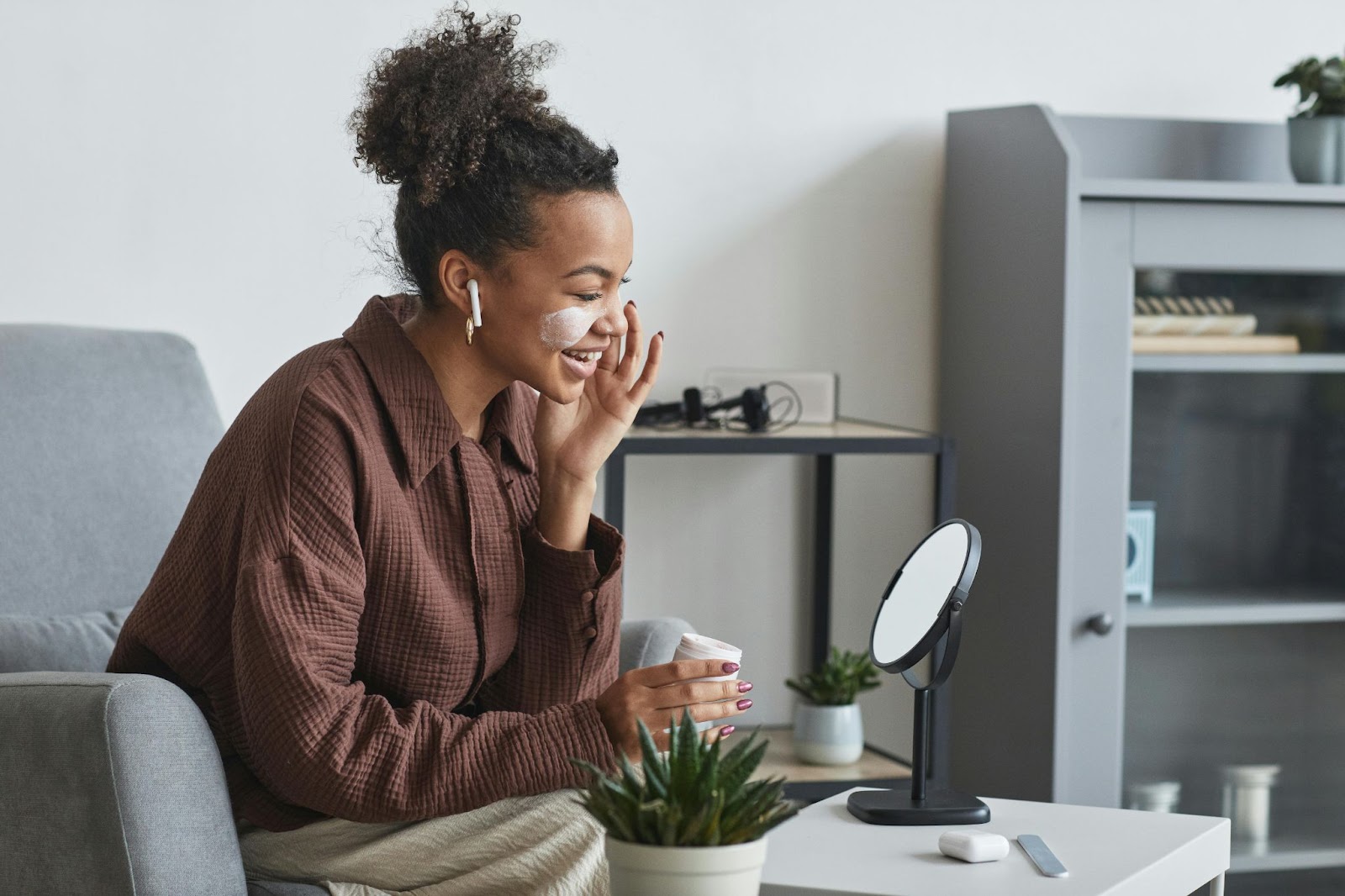
5. Sunscreen – The Ultimate Anti-Aging Step
- SPF is your armor against the sun. A lot of skincare is associated with vanity, but SPF is especially a health concern. SPF serves as protection against the UV rays of the sun, helping prevent things like skin cancer. I must admit, using SPF was a learning curve for me. As someone with darker skin, it was difficult to find a product that wouldn’t leave a white cast. The standard rule is to use two fingers worth of SPF on your face and neck. There are different types of SPF on shelves. The higher the SPF level, the more protected you are. There are also combination products (like SPF in makeup, chapstick, and moisturizer) that you can use.
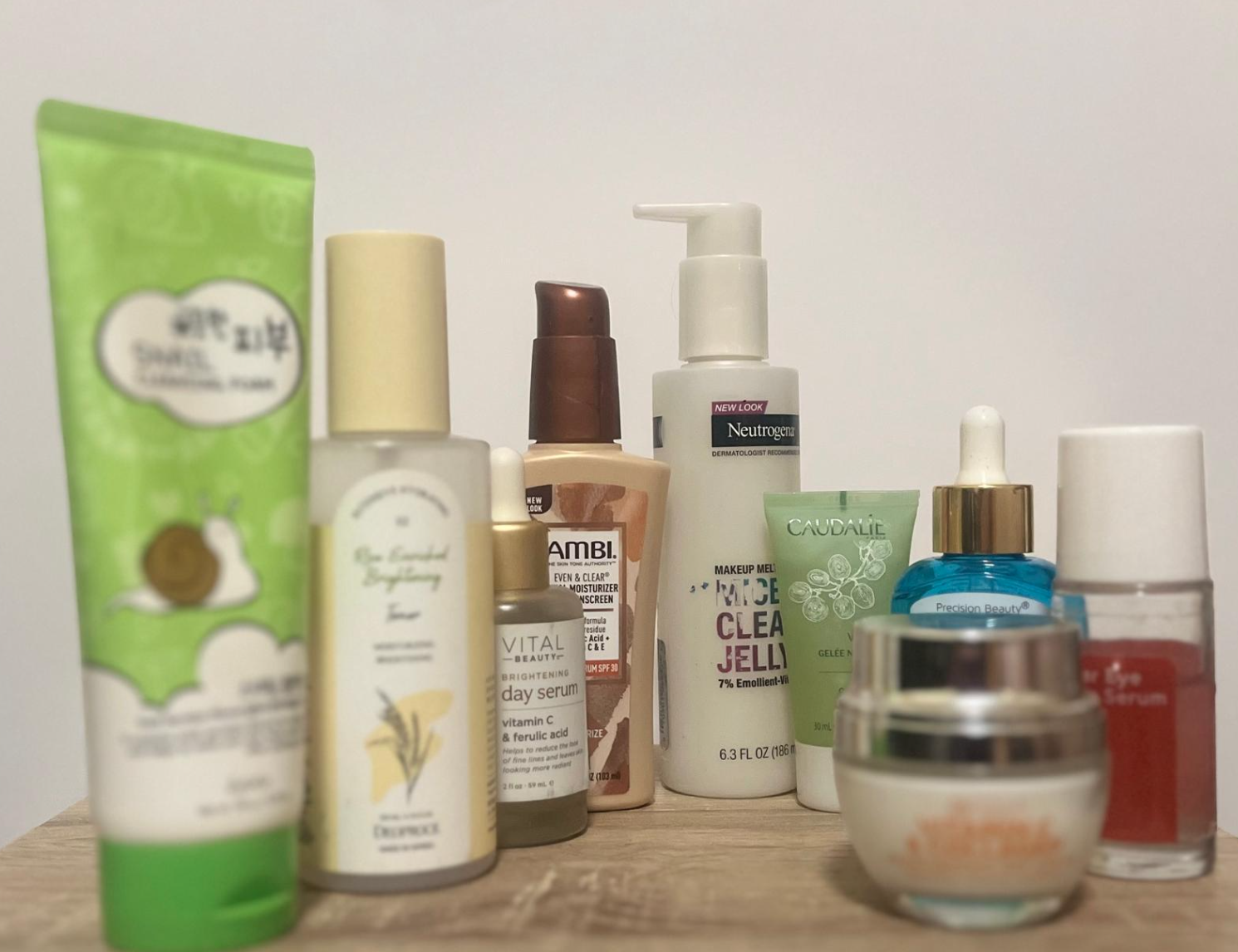
Step 3: Building a Morning & Night Routine
- Your AM routine is focused on protection. Protection from the wind, the sun, and any particles in the air. Ingredients like Vitamin C and SPF protect your skin from the outside and act as a wall between your face and any makeup products that you may use. I have less time in the morning (I’ll take more sleep any day!), so my morning routine is a lot shorter.
- My PM routine is a little longer because it’s a way for me to wind down after a long day. I focus on cleansing and rejuvenating my skin. I do things like double cleansing at night to get rid of my makeup and SPF. I then go in and use the same cleanser from the morning and continue with the same routine as always.
- Once or twice a week, I’ll exfoliate and use a face mask. This highly depends on how much time I have and how my skin feels. While there are a lot of benefits for my skin, they are incredibly relaxing and a good way to destress when life gets difficult.
Step 4: Extra Skincare Tips for Best Results
- Don’t over exfoliate! Trust me, I know how great the skin feels after a good exfoliator. While I recommend using a mild exfoliator once a week, make sure you don’t overdo it. However, over-exfoliating can damage your skin barrier and create irritation.
- Say it with me… cleanser, toner, serums, moisturizer, SPF! This is the order you should be going with your skincare. Use a pump/squeeze of cleanser, enough toner to fit the palm of your hand, a couple drops of serum, a pump of moisturizer and 2 tablespoons (2 fingers worth) of SPF.
- Try to use cold water on your skin, since it helps close pores. If you prefer hot water, try to use it towards the beginning of your routine and splash some cold water at the end.
- Use a Gua Sha if you can! I swear by facial yoga, and it really does make a difference! Gua Shas encourage lymphatic drainage, which can improve the quality of your skin.
- Skincare is more than just the products you put on your face! Make sure you are eating healthy and drinking enough water every day to make sure you keep both your skin and the rest of your body healthy.
Also Love: Glass Skin Secrets: The Korean Skincare Routine That Works
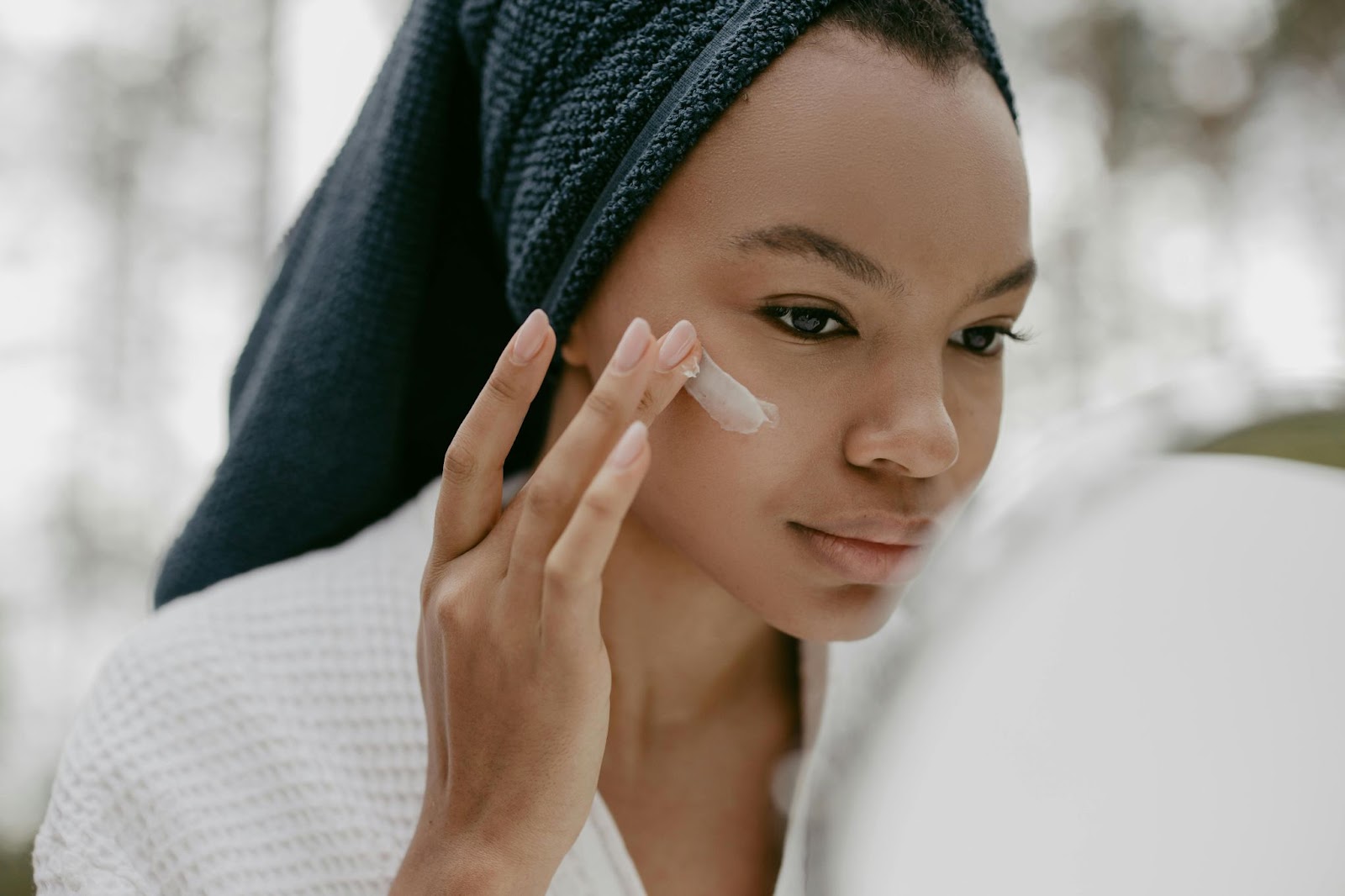
FAQs
What is the most important step in a skincare routine?
- To me, sunscreen is non-negotiable. SPF protects against skin cancer from skin damage from UV rays. Because of Global Warming, SPF is becoming increasingly more essential. If nothing else, please please PLEASE use sunscreen before you step out of your house.
How long does it take to see results from a skincare routine?
- Skincare requires patients. The changes may be subtle, and it’ll probably take a bit for the ingredients to work. I found that skincare results were more noticeable when I was a teenager and targeting acne. Don’t get discouraged, and remember that consistency is key. As a general timeline, here is the time it takes for some popular ingredients to work:
- AHA/BHA 3-4 weeks
- Vitamin C – several weeks to 1 month
- Niacinamide – several weeks to 1 month
- Hyaluronic Acid – 8+ weeks
- Retinol – several weeks to months
Should I change my skincare routine in different seasons?
- Different seasons can make your skin feel different, depending on where you leave. The Georgia sun makes my skin oilier in the summer, so I wear a more powerful SPF and focus on brightening products like Vitamin C. I use a thicker moisturizer and lip balm in the winter since it gets very dry. Remember to listen to your skin. It was a learning curve, but recognizing what my skin looked like during the day and using products that helped my symptoms helped improve my skin.
Do I need a different skincare routine in my 20s, 30s, and beyond?
- In your 20s, your skincare routine doesn’t need to be too extensive. Your skin is still developing, so don’t worry about using products like retinol unless a dermatologist or esthetician recommends it. Instead, focus on using SPF and hydration. Also, if you’re like me and wear makeup everyday, invest in a good cleanser.
- As you get into your 30s, consider your skin concerns as you expand your skincare routine. If you are worried about fine lines and collagen loss, you can slowly introduce retinol to your routine. Continue listening to your skin as you get older and giving it what it needs.
Final Thoughts
It took me years before skincare became a part of my daily life. Start off with a basic routine and adjust as needed. The best habits are built bit by bit, giving yourself time to adjust to new routines. Remember that finding the right routine is about experimenting and finding what works for you!
Share your skincare routine and favorite products in the comments! I always love learning about effective products on the market 🙂
Plugin designed by RofiTech


Leave a Reply